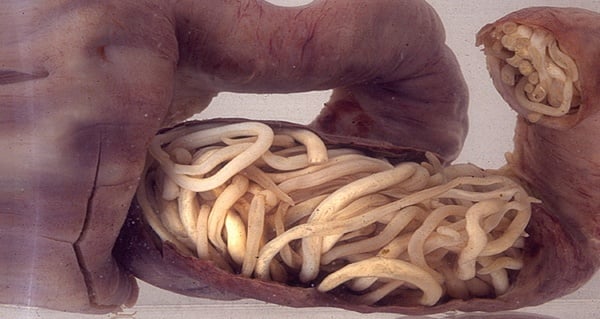

Britannica Beyond We’ve created a new place where questions are at the center of learning.100 Women Britannica celebrates the centennial of the Nineteenth Amendment, highlighting suffragists and history-making politicians.
Fluke worm how to#
COVID-19 Portal While this global health crisis continues to evolve, it can be useful to look to past pandemics to better understand how to respond today.Most are flattened and leaflike or ribbonlike, although some are stout and circular in cross section. The symmetrical body of a fluke is covered with a noncellular cuticle. Student Portal Britannica is the ultimate student resource for key school subjects like history, government, literature, and more. The fluke s (Trematoda) are a class of parasitic worms belonging to the phylum Platyhelminthes.From tech to household and wellness products. Britannica Explains In these videos, Britannica explains a variety of topics and answers frequently asked questions.This Time in History In these videos, find out what happened this month (or any month!) in history.#WTFact Videos In #WTFact Britannica shares some of the most bizarre facts we can find.Demystified Videos In Demystified, Britannica has all the answers to your burning questions.Britannica Classics Check out these retro videos from Encyclopedia Britannica’s archives.Repeated mass treatment, providing potable water, sanitation, education on hygiene and snail control can help control and eventually eliminate this disease. Treatment is available to eliminate the flat worm, but cannot undo the damage from the eggs. The impact of this disease is second only to malaria as the most devastating parasitic disease. 700 million people live in areas where this disease is found. Schistosomiasis affects about 240 million people worldwide and is estimated to be responsible for over 200,000 deaths each year in sub-Sahara Africa. Untreated infections lead to enlarged liver, abdominal pain, anemia, blood in the urine or feces, trouble passing urine and an increased risk of bladder cancer. More eggs trapped in the body leads to more symptoms and more severe disease. Liver flukes infect the liver, gallbladder, and bile duct in humans. Found across parts of Asia, Clonorchis is also known as the Chinese or oriental liver fluke. Unfortunately, continual exposure to infected waters causes repeated infections. Clonorchiasis ( Clonorchis Infection) Clonorchis is a liver fluke parasite that humans can get by eating raw or undercooked fish, crabs, or crayfish from areas where the parasite is found. Symptoms usually start one to two months after exposure and include: an itchy rash, bloody urine or diarrhea, stomach pain, or fever and chills. If the eggs don’t make it out of the body, the body’s reaction to these eggs causes the injury and damage characteristic of this disease. If these eggs get into a river or lake, with the right snails, they can complete their cycle and eventually infect another person entering the water. The female produces eggs that are released in the person’s urine or feces. The same cycle between humans, water and snails, except with this blood fluke, the larval stage does not die, but continues to move through the body, and eventually mature into adult male and female worms in the blood vessels near the intestines or kidneys. In Africa, the Caribbean, the Middle East and Southeast Asia, a closely related flatworm or “blood fluke” causes schistosomiasis (also known as Bilharzia). The rash goes away without treatment and symptoms are most commonly treated with topical creams or lotions. People can be exposed when swimming or wading in the shallow, marshy parts of the water where the snails are found. Worm control is one of the most important management factors on any sheep farm and it.
Fluke worm skin#
This itchy rash is caused by an allergic reaction to the tiny larval stage of the worm burrowing into your skin and then dying. Imuworm Plus the natural way to combat fluke and worms in sheep. Once inside the snail, they reproduce and then leave the snail in search of a bird… or an unsuspecting swimmer.

The worm lay eggs, the eggs of the worm get into the feces and drop into the water, hatch and then search for a snail to infect. Swimmer’s itch or cercarial dermatitis, is a rash caused by a tiny parasitic flatworm of birds that can occur in lakes and ponds throughout Arizona. have sickness, diarrhoea or a stomach ache for longer than 2 weeks. have a red, itchy worm-shaped rash on your skin. You may remember that at the end of May, Maricopa County Department of Public Health warned us about avoiding swimmer’s itch by not wading along the shorelines of some of our lakes. See a GP if you: find a large worm or large piece of worm in your poo.


 0 kommentar(er)
0 kommentar(er)
